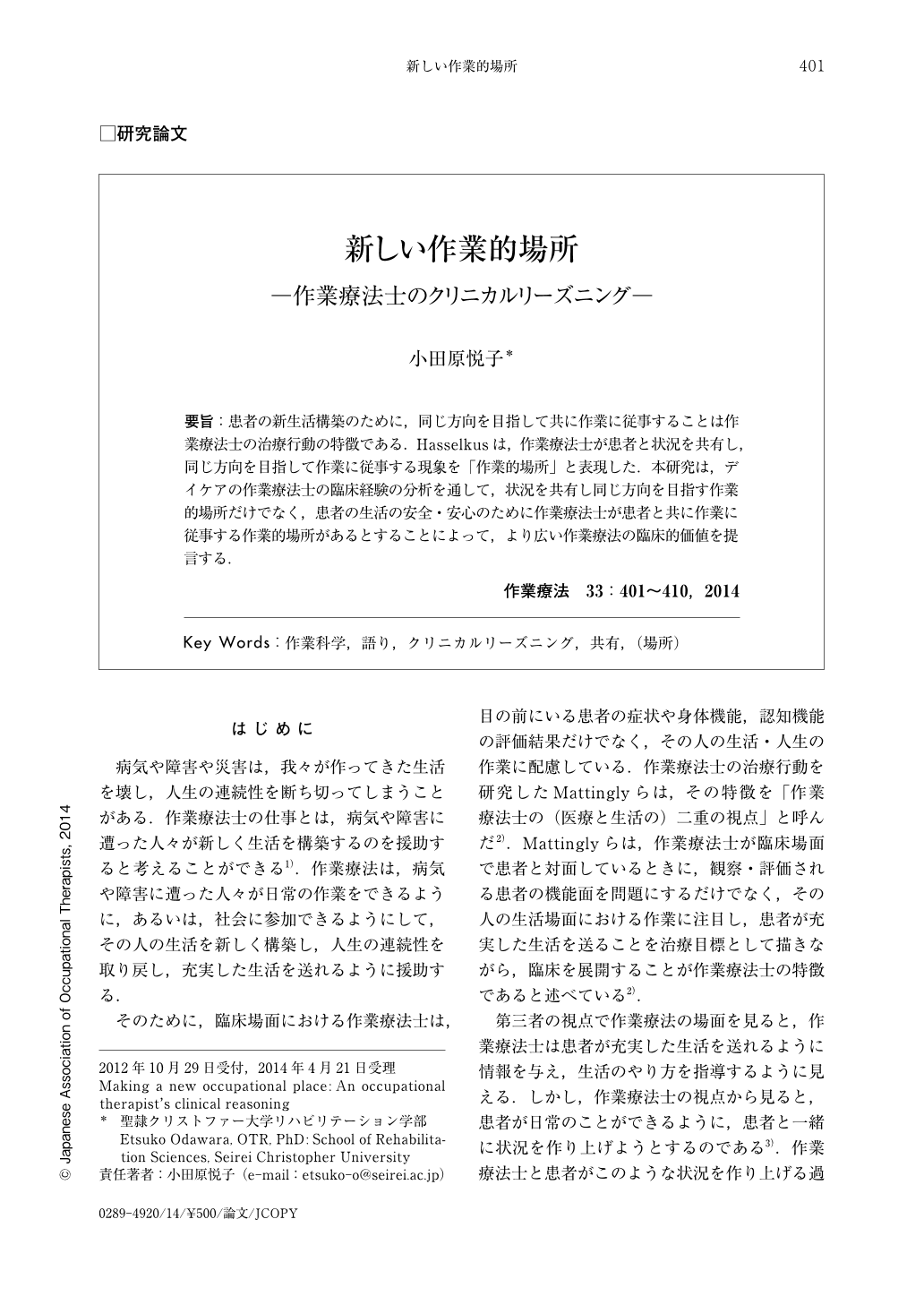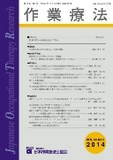Japanese
English
- 販売していません
- Abstract 文献概要
- 1ページ目 Look Inside
- 参考文献 Reference
- サイト内被引用 Cited by
要旨:患者の新生活構築のために,同じ方向を目指して共に作業に従事することは作業療法士の治療行動の特徴である.Hasselkusは,作業療法士が患者と状況を共有し,同じ方向を目指して作業に従事する現象を「作業的場所」と表現した.本研究は,デイケアの作業療法士の臨床経験の分析を通して,状況を共有し同じ方向を目指す作業的場所だけでなく,患者の生活の安全・安心のために作業療法士が患者と共に作業に従事する作業的場所があるとすることによって,より広い作業療法の臨床的価値を提言する.
Hasselkus stressed that occupational therapy's occupational place, in which a therapist and her client engage in occupation, requires the occupational therapist to share the significance of the session with the client and have similar goals as the client in order for the interaction to be therapeutic. This research used a narrative study to clarify a day-care occupational therapist's occupational place within both satisfactory and unsatisfactory clinical experiences. The results indicated that the therapist's satisfactory clinical experience required not only a sense of occupational place incorporating Hasselkus' characteristic goal sharing, but an occupational place in which the therapist engaged in interaction for the client's safety in daily activities, which was not the client's goal. Therefore, this study suggests that concept of occupational therapy's occupational place has a wider therapeutic meaning than Hasselkus originally described.

Copyright © 2014, Japanese Association of Occupational Therapists. All rights reserved.


